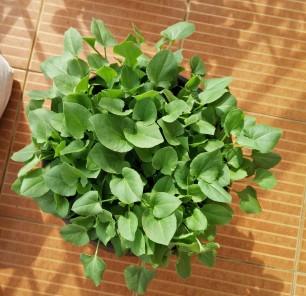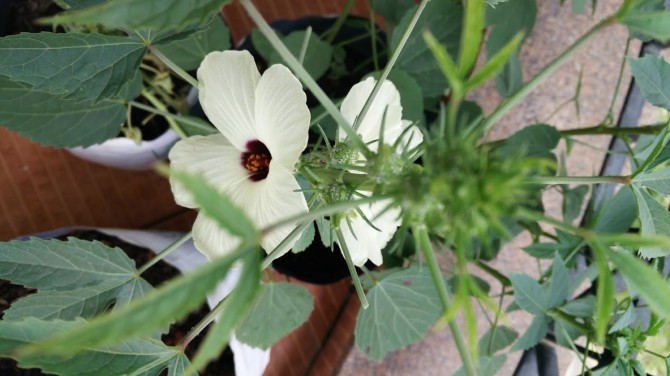First things first: My first experiment with lab-produced microbes took place in June 2013. And, I am still learning. One lifetime is not enough to unravel the mysteries hidden in a fistful of soil. But meanwhile, I thought of sharing this info with you which helped us transform our eight-acre community garden into completely organic. I am open to inputs, corrections and suggestions on this topic. For all I know, I have been able to merely scratch the surface.
 The journey began with a purpose. I didn’t have much information on how to go organic the whole hog but was hell-bent on saying a firm ‘NO’ to the contractor who sprayed 600 litres of diluted pesticides to our garden. The effect was so horrible that according to one neighbour, her pet used to develop blisters after rubbing its body on the lawns. One can well imagine the effects on little children, birds and bees and other insects. I often wonder why on earth we are so silent and patient about this crime going on around us but get so unnecessarily worked up about trivial issues. Well, that’s a topic for a different day.
The journey began with a purpose. I didn’t have much information on how to go organic the whole hog but was hell-bent on saying a firm ‘NO’ to the contractor who sprayed 600 litres of diluted pesticides to our garden. The effect was so horrible that according to one neighbour, her pet used to develop blisters after rubbing its body on the lawns. One can well imagine the effects on little children, birds and bees and other insects. I often wonder why on earth we are so silent and patient about this crime going on around us but get so unnecessarily worked up about trivial issues. Well, that’s a topic for a different day.
These are a few tips and contacts that you can give a try by launching a pilot project in your garden. What I have been able to gather here are tips that will boost the growth of your plants—ornamental or kitchen garden—and prevent infections significantly. My own balcony garden has hardly developed infections over the years. The effect was equally spectacular when I started growing leafy veggies. All I do is to feed sufficient enriched compost to the potmix and water the growbags adequately.
These are lab-produced microbes which I buy from Gandhi Krishi Vignana Kendra (GKVK), Hebbal. The scientific fraternity felt the need to take refuge in a petri dish to culture these microbes because of the unprecedented depletion of these silent soldiers in the soil. We all know who the criminals are: pesticides and synthetic fertilisers, so on and so forth. By adding these microbes to the soil, we will only help it regain its strength and offer immunity to the plants of all kinds.
Trichoderma viride: A biofungicide that keeps fungal pathogens in check. It’s found naturally in soil. But a few kilograms of it manually added to each acre speeds up microbial activity and brings down fungal infections.
Azotobacter: A type of bacteria, a bio-fertiliser, plays a major role as a nitrogen-fixing agent. Although 78% of air is made up of nitrogen—one of the macronutrients needed for the plants—it needs these microbes to take it directly to the roots.
 PSB (phosphorus solubilising bacteria): Even though chemical phosphate fertilisers are loaded with phosphorus (P), an essential macronutrient, roots fail to absorb it as it becomes immobilised. It takes these soil inoculants to increase the uptake of phosphorus for high yield.
PSB (phosphorus solubilising bacteria): Even though chemical phosphate fertilisers are loaded with phosphorus (P), an essential macronutrient, roots fail to absorb it as it becomes immobilised. It takes these soil inoculants to increase the uptake of phosphorus for high yield.
Rhizobium: Many farmers in Karnataka use this nitrogen-fixing bacteria to increase the yield. Especially helpful in boosting the growth of beans varieties.
Microbial Consortia: GKVK also sells this mix of microbes which has all the above microbes, pseudomonas and much more. This is what Wikipedia says about pseudomonas: “Since the mid-1980s, certain members of the Pseudomonas genus have been applied to cereal seeds or applied directly to soils as a way of preventing the growth or establishment of crop pathogens. This practice is generically referred to as biocontrol”.
All these microbes are produced and packaged in GKVK’s Department for Popularisation of Biofertilisers. The staff is quite helpful. It’s a little hard to locate the office. Just remember that it is close to the Botanical Garden and any student can help you locate it. Each kg of microbes costs around Rs 80 with a shelf life of six months.
My method: I did some tweaking with the quantity of microbes for my small garden. The first time it went horribly wrong as I overloaded the soil mix with the consortia. These days, I just add a fistful of these microbes to 100 kgs of potmix. It has to be moist to help the microbes multiply quickly. After 15 days, I mix it well all over again and go ahead with planting. The microbes do all the work and help me harvest leafy veggies more than my family can eat.
Are these organic?
These microbes are available in the natural environment. Any soil that has not been polluted with pesticides and chemical fertilisers has them in abundance. In a scientific lab, they are produced in large quantities to help farmers apply to their fields so that the microbes recolonise quickly. They are not chemicals. For any further queries, please get in touch with the GKVK staff. Else, please leave your comments on the blog so that I can collate them and get them answered by scientists.
Compost culture
Yes! GKVK also sells this. Give it a try.










For folks in the south of BLR … these microbes are available in DoH (Department of Horticulture), opposite Meenakshi Mall on Bennerghatta Road as well
LikeLiked by 3 people
Thanks for the info, Srikant.
LikeLike
Thank you for this amazing information, also thanks to yr community level composting articles ,we are actively looking at no 11 in our RWA, will be writing to mr KP singh for some more info, shall i mark a copy to you for yr comments , also wondering if adding some of this microbial consortia would help the composting ??? and how ??/
LikeLiked by 1 person
Hi Keshav, happy to hear about your pilot CCM11 project. Please do cc: me in your mail to KP. (endlesslygreen360@gmail.com). Best wishes. 🙂
Instead of microbial consortia, buy the *compost culture* from GKVK and give it a try. It’s an accelerator. It will speed up the microbial activity and some leachate may come out. To tackle that, try adding some extra dry leaves at the bottom and also in each layer. Once you do this, your compost will turn out to be extremely rich. Some of the microbes I have mentioned above are already present in the compost culture (that’s what the GKVK staff told me). So you don’t need to once again mix more microbes. Not needed.
Please do keep me updated on the progress especially if you are testing the culture. Thanks. 🙂
LikeLike
thank you for the input , will definitely cc you , i for see the segregation as the difficult part , any suggestions on that will be welcome
LikeLike
Pull in enough volunteers and create a buzz in the community. Get the community involved through emails and posters and other painting contests for children, etc. Appoint volunteers for a certain number of houses so that monitoring is easy. It is indeed a bit hard to get everyone interested in segregation. But quite possible.
LikeLike
hello, can u give me more directions for GKVK near botanical gardens to get the compost culture , as i am trying to get my daughter to buy it , she is in that part of town .
also , the pilot project for community composting ( based on project 11 , rainbow drive ) was successful , put in 225 kgs kitchen waste and got good 100 kgs compost , also learnt a lot of things , now to get the pilot project going for the segregation
LikeLiked by 1 person
Sorry to have taken so long to reply, Keshav. KP did update me on your success in community composting. Hearty congratulations! And I trust you when you say you did learn a lot of things. That’s particularly true with such DIY methods. Anything vendor-driven is generally standardised and our own achievement is far less.
As far GKVK, you HAVE to find it yourself. Please ask the students around to lead you to the Dept for Popularisation of Biofertilisers. Or simply, just ask where the microbes are sold. They will lead you there.
Wish you all the best. 🙂
LikeLike
Pingback: How to further enrich your compost | ENDLESSLY GREEN | WORLD ORGANIC NEWS
Thank You for the great post. We just relocated to North Blore and I ran out of Bokashi bran. Could you please let me know the compost culture you mentioned in the post, is same as the bokashi bran. or is it for a different purpose.
LikeLiked by 1 person
Dear Tej, glad to know the post was helpful. At GKVK, the compost culture is aerobic. It cannot be used as an accelerator for anaerobic composting methods like Bokashi. Try mixing a little bit of compost culture with moist cocopeat, leave it for a few days and then use it as accelerator. Let me know if that works. Start a small experiment. Good luck. 🙂
LikeLike